EVENTイベント情報
We are pleased to announce that “The 5th International Symposium on AI and Electronics” is going to be held.

Program
Day 1 (Monday, 19th February 2024)
| Chair Prof. Hirano |
9:30-9:40 | Welcome addressPresident Hideo Ohno |
|---|---|---|
| 9:40-9:50 | Opening remarksProf. Toshiro Kaneko | |
| 9:50-9:55 | Announcement from Program chair | |
| Session 1Session Chair Prof. Omachi |
10:00-11:00 |
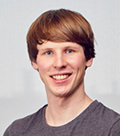 Keynote speech 1
Keynote speech 1
Reinforcement Learning and Planning with Large Language ModelsMr. Julian SchrittwieserGoogle DeepMind |
| 11:00-11:30 |
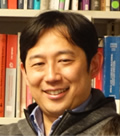 Invited talk 1 from a faculty member
Invited talk 1 from a faculty member
Difficulty and Stability of Training Large Language ModelsProf. Jun SuzukiGraduate School of Information Sciences, Tohoku University | |
| 11:30-12:00 |
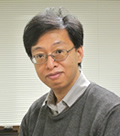 Invited talk 2 from a faculty member
Invited talk 2 from a faculty member
Synthetic Minimal Cells:Toward an understanding of What is Life?Prof. Masayuki ImaiDepartment of Physics, Graduate School of Science, Tohoku University | |
| 12:00-13:00 | Lunch break | |
| Session 2Session Chair Prof. Otsuka |
13:00-13:50 |
Oral poster summary from 40 students (1 min each) |
| 14:00-16:30 |
Student poster session | |
| 16:30-17:30 |
 Keynote speech 2
Keynote speech 2
Integration of Quantum Communications in Telecom NetworksDr. Andrew ShieldsToshiba Cambridge Research Lab. | |
| 18:00-20:00 | Welcome reception |
Day 2 (Tuesday, 20th February 2024)
| Session 3Session Chair Prof. Hanyu |
9:30-9:35 | Announcement from Program chair |
|---|---|---|
| 9:40-10:40 |
 Keynote speech 3
Keynote speech 3
Hardware for Stochastic Simulated Annealing to Solve Large-Scale
Prof. Warren Gross | |
| 10:40-11:10 |
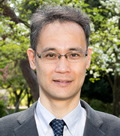 Invited talk 3 from a faculty member
Invited talk 3 from a faculty member
Toward optical and wireless convergence with coherently-linked access networkProf. Toshihiko HirookaResearch Institute of Electrical Communication, Tohoku University | |
| 11:15-12:05 |
Oral poster summary from 40 students (1 min each) | |
| 12:05-13:00 | Lunch break, display of student’s posters | |
| Session 4Session Chair Prof. Ito |
13:00-15:30 |
Student poster session |
| 15:40-16:40 |
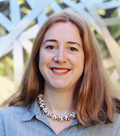 Keynote speech 4
Keynote speech 4
Continually learning Conversational AIProf. Milica GasicHeinrich Heine University Düsseldorf | |
| 16:50-17:00 | Closing remarksProf. Masahiro Yamaguchi |
 Keynote speech 1
Keynote speech 1
Reinforcement Learning and Planning with Large Language Models
Mr. Julian SchrittwieserGoogle DeepMind
Abstract
Large language models (LLMs) have shown remarkable capabilities in a wide range of natural language processing tasks. Recently, there has been growing interest in the use of reinforcement learning (RL) and planning to improve the performance and usability of LLMs. In this talk, I will provide a brief overview of the state-of-the-art in this area and discuss some of the challenges and open questions. In particular, I will cover challenges and best practices when training LLM-based reward models for RL as well as how to run reward-model based RLHF. I will also discuss the nascent area of planning algorithms for language models, and particularly fruitful directions for future work.
Biography
Julian Schrittwieser is a Principal Research Engineer at Google DeepMind, where he works on machine learning and artificial intelligence. He is known for his contributions to the field of deep reinforcement learning, particularly in the area of board games and video games. He was a key member of the AlphaGo team that defeated the world's best Go players in 2016, and the AlphaZero team that defeated the world's best chess and shogi players in 2017. His most recent work includes MuZero, a general-purpose reinforcement learning and planning algorithm, AlphaCode, a language model based system that can generate computer programs to solve competitive coding problems and AlphaTensor, a RL and planning based system to discover better algorithms for matrix-multiplication and other problems. Currently he works on language models as part of Google's Gemini project.
 Keynote speech 2
Keynote speech 2
Integration of Quantum Communications in Telecom Networks
Dr. Andrew ShieldsToshiba Cambridge Research Lab.
Abstract
Quantum computing’s rapid advancement threatens current cryptography, which relies on complex problems solvable by quantum computers. This necessitates the development of “quantum-safe” technologies for future network protection. Today’s data is also at risk from “harvest now, decrypt later” attacks, where encrypted messages are stored for decryption once quantum processors are available. This is especially concerning for long-term valuable information like financial records and medical data.
Quantum cryptography offers a set of protocols with provable security. Specifically, Quantum Key Distribution (QKD) allows secret keys to be shared on optical networks, making it immune to attacks by powerful processors, including quantum computers.
This talk will review quantum cryptography’s recent progress, focusing on integrating quantum communications into conventional networks. It will feature real-world examples of deployment in metropolitan networks and use-cases in finance, healthcare, and government sectors.
Biography
Andrew Shields is Head of Quantum Technology at Toshiba Europe, where he leads R&D of quantum communication devices and systems. He has published over 500 papers and patents in this field, according to Google Scholar. He also leads business development and strategic partnerships for quantum technologies in Toshiba Europe.
Shields has received several awards for his contributions to quantum technology, including the 2022 Katharine Burr Blodgett Medal and Prize by the Institute of Physics, which recognizes his pioneering R&D in the field. He is a Fellow of the Institute of Physics and the Royal Academy of Engineering.
 Keynote speech 3
Keynote speech 3
Hardware for Stochastic Simulated Annealing to Solve Large-Scale
Combinatorial Optimization Problems
Prof. Warren GrossMcGill University, Canada
Abstract
Many practical problems require choosing from a very large number of possible solutions, but current computing is extremely limited in the scale of the problems it can handle. While quantum computing offers the promise of solving large-scale combinatorial optimization problems quickly, there is a need for quantum-inspired solutions that could be deployed in the near-term. In this talk we will review the state of the art in hardware designs for simulated annealing, a meta-heuristic solver for combinatorial optimization problems and describe an architecture based on stochastic computing for the efficient hardware implementation of annealing. We will also discuss applications of simulated annealing in emerging communications systems.
Biography
Prof. Warren Gross is a James McGill Professor and Department Chair of the Department of Electrical and Computer Engineering at McGill University. His research interests focus on signal processing, digital communications, and machine learning in hardware, bridging algorithms and architectures. Prof. Gross served as Chair of the IEEE Signal Processing Society Technical Committee on Design and Implementation of Signal Processing Systems and served on the Technical Directions Board of the IEEE Signal Processing Society. He also has held editorial positions as Senior Area Editor and Associate Editor of the IEEE Transactions on Signal Processing. He served as General Co-Chair of the 16th IEEE / ACM International Symposium on Nanoscale Architectures (NANOARCH 2021), the 2017 IEEE Global Conference on Signal and Information Processing Systems (Globecom 2017) and the 2017 IEEE Workshop on Signal Processing Systems (SiPS 2017) among other senior leadership positions in several international conferences and workshops.
 Keynote speech 4
Keynote speech 4
Continually learning Conversational AI
Prof. Milica GasicHeinrich Heine University Düsseldorf
Abstract
Large language models have achieved impressive performance across the NLP task spectrum and even appear to have superhuman conversational capabilities. However, they suffer from hallucinations, lack of transparency, and limited ability to improve over time without needing full and rather expensive retraining. Modular dialogue systems, on the other hand, offer an interpretable underlying state and action and a set-up for long-term reward optimisation via reinforcement learning. In this talk, I’ll explain the steps we take towards building a continually learning task-oriented dialogue system consisting of a dynamic policy model, a data-driven user simulator, and a challenging environment to study the ability of the system to learn in a world that is continuously changing.
Biography
Milica Gašić is a Professor in Dialog Systems and Machine Learning at Heinrich Heine University. Her research focuses on fundamental questions of human-computer dialogue modelling and lie in the intersection of Natural Language Processing and Machine Learning. She is a recipient of the European Research Council Starting Grant and the Alexander von Humboldt Sofja Kovalevskaja Award. Prof. Gašić is the vice-president of SIGDIAL (Special Interest Group on Discourse and Dialogue), a member of the International Scientific Advisory Board of DFKI (Deutsches Forschungszentrum für Künstliche Intelligenz), a member of ACL (Association for Computational Linguistics), a member of ELLIS (European Lab for Learning & Intelligent Systems) and a senior member of IEEE (Institute of Electrical and Electronics Engineers).
 Invited talk 1 from a faculty member
Invited talk 1 from a faculty member
Difficulty and Stability of Training Large Language Models
Prof. Jun SuzukiGraduate School of Information Sciences, Tohoku University
Abstract
Large language models (LLMs), a technology that underpins ChatGPT, have emerged as standout advancements in the AI research field in recent years. Indeed, its success captures the attention of many companies and research institutes eager to develop LLMs. It is well-known that building an LLM necessitates extensive computational infrastructure and substantial budgets (financial investments), but it also requires considerable expertise and tremendous effort from the developers involved. This is because learning LLMs tends to be unstable for several reasons. Moreover, most LLM developers are new to the task and lack the knowledge shared in the community to overcome the issue. In this talk, I intend to delve into the common challenges associated with the instability encountered during the training phase of LLMs. First, I will briefly describe the recent achievements of LLMs and then introduce some typical observations in training LLMs from scratch. Finally, I will show various strategies devised to address or at least alleviate the instability problems of LLMs. Through this talk, I would like to share the difficulty of building a new LLM.
Biography
Jun Suzuki is a director of the Center for Language AI Research at Tohoku University. From 2001 to 2018, he was a researcher (Distinguished researcher) at NTT Communication Science Laboratories, NTT Corporation. In 2005, while working at NTT CS Lab, he completed his doctoral dissertation and received a Ph.D. in engineering from the Graduate School of Information Science, Nara Institute of Science and Technology. He joined Tohoku University as an associate professor at the Graduate School of Information Science (GSIS) in 2018 and became a full professor at the Center for Data-driven Science and Artificial Intelligence. He has been in his current position since 2023. He was also a visiting researcher at Google LLC (Google Brain Team) from 2020 to 2022 under a contract of cross-appointment agreement. His research interests include machine learning, natural language processing, and artificial intelligence.
 Invited talk 2 from a faculty member
Invited talk 2 from a faculty member
Synthetic Minimal Cells:Toward an understanding of What is Life?
Prof. Masayuki ImaiDepartment of Physics, Graduate School of Science, Tohoku University
Abstract
Living systems are cell-based and reproduce themselves through a network of chemical transformations (metabolism), whereby the offspring have the same proliferation abilities as the parent structure (recursive reproduction). The chemical network is maintained by numerous proteins that are generated based on sequence information encoded in DNA. A traditional approach to understanding living systems is to reconstruct the metabolic pathways that synthesize lipids using proteins expressed by DNA inside a vesicular compartment so that vesicle reproduction occurs. However, since this approach utilizes the heart of a complex living system (i.e., the central dogma of molecular biology), shedding light on the road from non-living forms of matter to living systems is still very challenging. In this study, we present a synthetic minimal cell system approach, where vesicles reproduce themselves based on instructions encoded in information molecules using non-biological substances. Although our minimal cells still have significant gaps from living systems, we have succeeded in reproducing the essence of important life systems, such as the linkage between replicating information molecules and the self-production of vesicles. We believe this approach sheds light on the pathway from non-living systems to living systems.
Biography
Academic background:
1983 Bachelor of Science, Osaka University
1985 Master of Science, Osaka University
1993 Doctor of Engineering, Kyoto University
Professional career:
1985 - 1992: Researcher, Toyobo Company.
1992 - 1998: Assistant Professor, Neutron Scattering Laboratory, Institute of Solid State Physics,
University of Tokyo.
1998 - 2001: Associate Professor, Department of Physics, Faculty of Science, Ochanomizu University.
2001 - 2012: Professor, Department of Physics, Faculty of Science, Ochanomizu University.
2012 - present: Professor, Department of Physics, Faculty of Science, Tohoku University.
Research interests:
Physics of living systems, Non-equilibrium soft matter physics, and Origin of life.
 Invited talk 3 from a faculty member
Invited talk 3 from a faculty member
Toward optical and wireless convergence with coherently-linked access network
Prof. Toshihiko HirookaResearch Institute of Electrical Communication, Tohoku University
Abstract
We have proposed a coherently linked optical and wireless transmission system toward a large-capacity radio access network (RAN) beyond 5G or6G. In this talk, we present our recent work on broadband, long-reach mobile fronthaul with digital coherent optical transmission technologies and efforts toward optical-wireless converged coherent access network.
Biography
Toshihiko Hirooka received the Ph.D. degree in electronics and information systems engineering from Osaka University in 2000. From 2000 to 2002, he was a Research Associate with the Department of Applied Mathematics, University of Colorado at Boulder. He is currently a Professor with the Research Institute of Electrical Communication, Tohoku University. He has engaged in research on ultrahigh-speed optical communications and nonlinear fiber optics, including optical time division multiplexing transmission, optical solitons, and optical signal processing.





